
SIGNALLING LAMPS

FIRST A MYSTERY SIGNALLING LAMP.
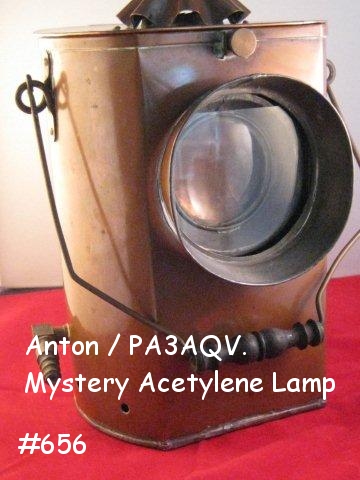
| 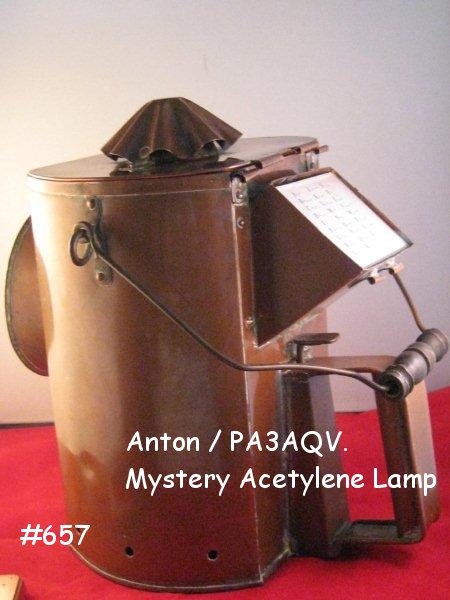 |
Lamp656........This mystery Signalling Lamp is owned by Anton / PA3AQV who is searching for any information please.
Do you recognise this type of lamp ? Any information will - I am sure - be most illuminating.
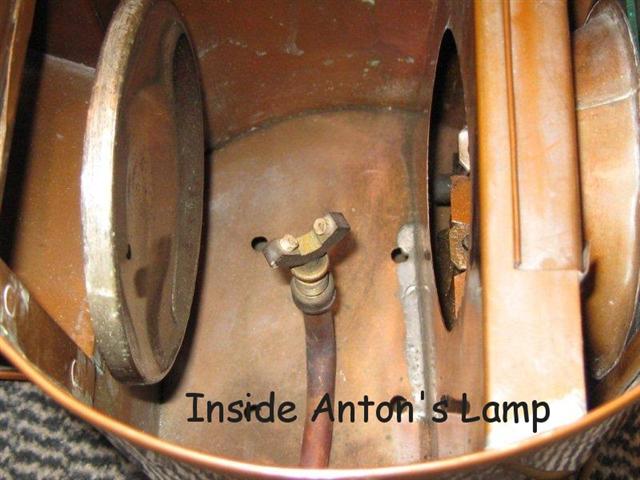 |
Mystery Lamp........A view inside showing burner etc..

THE ALDIS LAMP. AP 5110E.
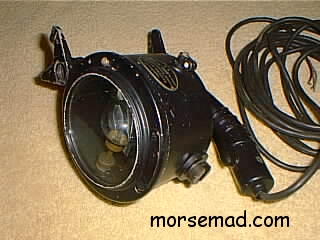
| 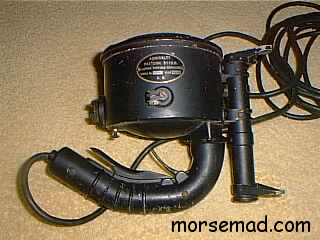 |
Above can be seen an ALDIS lamp used for Naval Daylight Signalling. Using a 12 Volt - 36 Watt bulb and a swivelling concave mirrored reflector, the Aldis Lamp is used for sending messages in morse code. The picture on the right shows the trigger switches. The large trigger switches the light on, and the smaller trigger, pressed with the forefinger, tilts the mirrored lens at the receiving station. There is a sight along the top of the lamp, and I could imagine it was quite an art to send ship to ship while in a force ten ! The plaque reads : Admiralty Pattern 5110.E. Lantern Portable Signalling. Serial No. 261204. Year 1944. A.B. ( I have also seen one that is pattern 5110.D. and dated 1941). The bulb - part no. AP 5111 - is no longer in production, however it is possible to adapt an Aldis lamp using a 12 Volt vehicle bulb and holder.

LANTERN SIGNALLING PORTABLE. AP 1038.
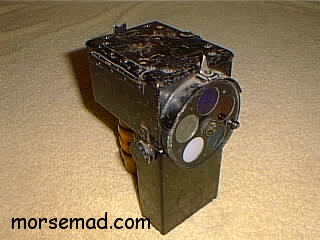
| 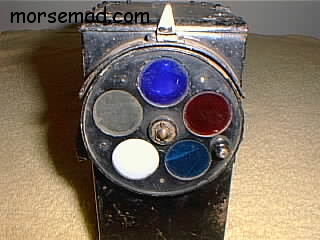 |
The two pictures above are of an early type of Lantern Signalling Portable / AP 1038. Admiralty Pattern 1038. C1945. The bulb is an Edison Mazda 1W 2V Patt 1039A, so a low power lamp this. The battery was rechargable. Smaller than the Aldis Lamp and with a box slung underneath for the battery. On the inside of the lid it reads : "Admiralty Pattern 1038. Lantern Signalling Portable. For V/S.(Visual Signalling), Year 1945. Lamp Pattern 1039. Battery Pattern 1040". Used for night-time convoy identification, hense the low power (1 watt) bulb. It has sockets for 2 bulbs (one to hold a spare), and five coloured lenses - blue / red / green / white and clear.

ADMIRALTY NIGHT SIGNALLING TORCH.

| 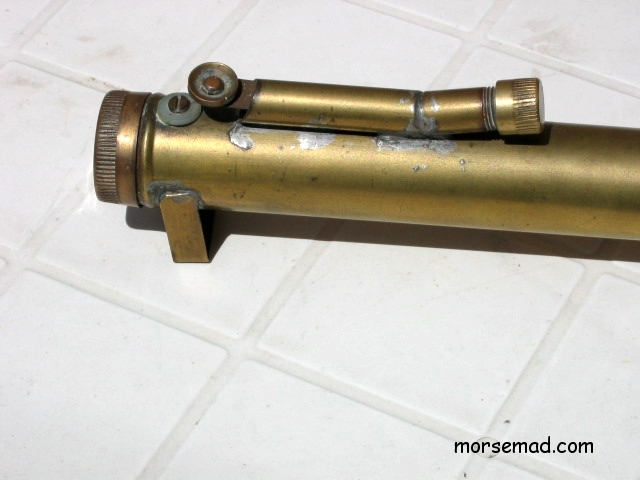 |
Above can be seen a Naval Nightime Signalling Torch. Along the top is a sprung metal strip that is pressed to illuminate the bulb [ a very basic morse key ] plus a neat little screw top tube to hold a spare bulb. At the front there are two lenses. A 1&3/8ths (33mm) blue lens that can be removed and stored in the compartment in the back of the torch. Pus a larger 2&1/8th (54mm) clear lens for normal use. I expect there were other colour lenses used also. Soldered joints are clearly visible and not very well finished. Perhaps it was made like this, or maybe it has been repaired. Believed to be made by "Shimwell Alexander & Co. London". (See MM22, page 40).

Johnnie Ohlin's Beautifully Restored "AP W2174A"
"AP W2174A Intermediate Lantern"
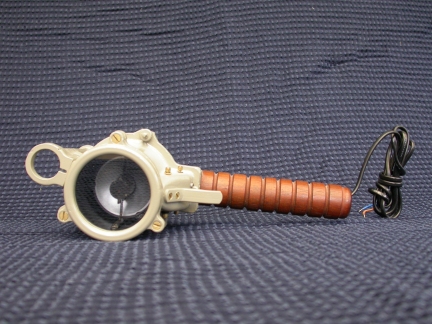
| 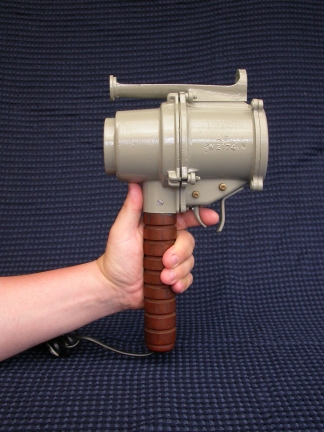 |
Above is a restored Admiraly Pattern AP W2174A with makers mark "BTH" owned by Johnnie Ohlin / SM6VYM. .("BTH" is British Thomson-Houston Company, Rugby, UK. They also made the aldis lamp).
Royal Navy (AP in the model number = Admiralty Pattern) lamp from around 1941.
A fine lamp ideed !
David Morris / ex-RN Communicator (Signallman) adds this latest info:
"The Heather Lantern was a small signalling lantern designed to be attached to the top of a pair of
binoculars allowing the hand holding the binoculars to also send morse. This was
intended for use when ships were `darkened' and not allowed to show any light.
Particularly useful during night surface actions. The lantern with the
multi-colour shades is not a Heather/Hether lantern. The lantern number AP W2174A was know as an `Intermediate Lantern'" David.
A note from Arthur Motley - "The "Hether" Lantern. Invented and patented by Rear Admiral Dereck Hetherington. Designed for increased accuracy and discretion while signalling between ships using morse code".

A CANADIAN NAVAL SIGNALLING LAMP. AP 378A.
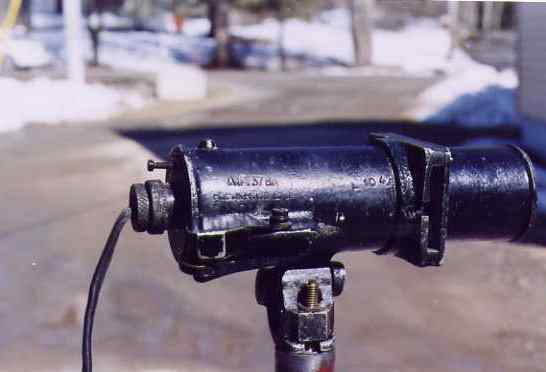
| 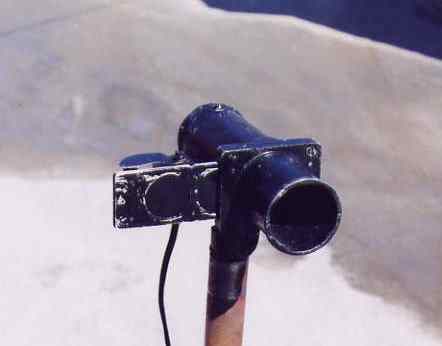 |
Interesting Info On The Above Pics.."I have a lamp (Hether Type ?) that was made in Canada during the war.It was made by R E & R Co . (Renfrew Electric and Refridgerator Co. Ltd. c 1944). Model Name/Number Admiralty Pattern 378A It is stamped AP 378A. I bought it surplus some 48 years ago when in high school and to this day do not know what it was used for ( other than being a signal lamp) About 6.25 " long and 2" diameter. It has a code key on the right hand side with a protective swing out cover over the top. It has a piece of lamp cord (wire) out the back which originally went to a 3 or 4 cell battery holder which was carried in a web pouch complete with carrying strap. Unfortunately over the years the battery holder and pouch got removed and lost. There are 2 rectanglular lenses, one has 3 shades of blue like yours and one has 3 shades of amber. They insert through the side and ahead of the lens. The slides have notches to index them in place. I still have the wooden storage box it came in with 2 wooden slots to hold the lenses. Mine has a very bright light so is different from yours in that regard". Larry Seaboyer / VE1ELT, Nova Scotia, Canada.

AN OFFICERS (?) SIGNALLING TORCH.
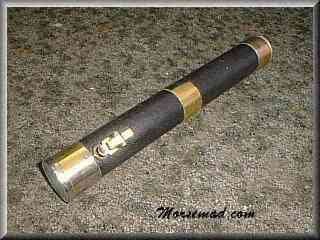
| 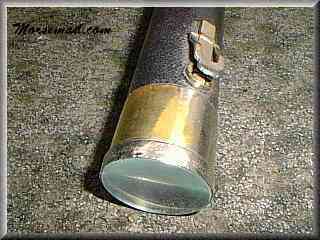 |
The signalling torch above looks most impressive and I suspect for "Officers Only". Leather bound and with silver plated brass fittings (50% of silver worn off). On the end cap is stamped : "BRITISH MADE TEC PAT.APLD FOR" On the center band there is a makers name but I cannot decifer the first two letters (can anyone help with identification please ?). All I can see is : "_ _ ANDEM Co Ltd".

Another Fine Admiralty Signal Torch. AP 16001.
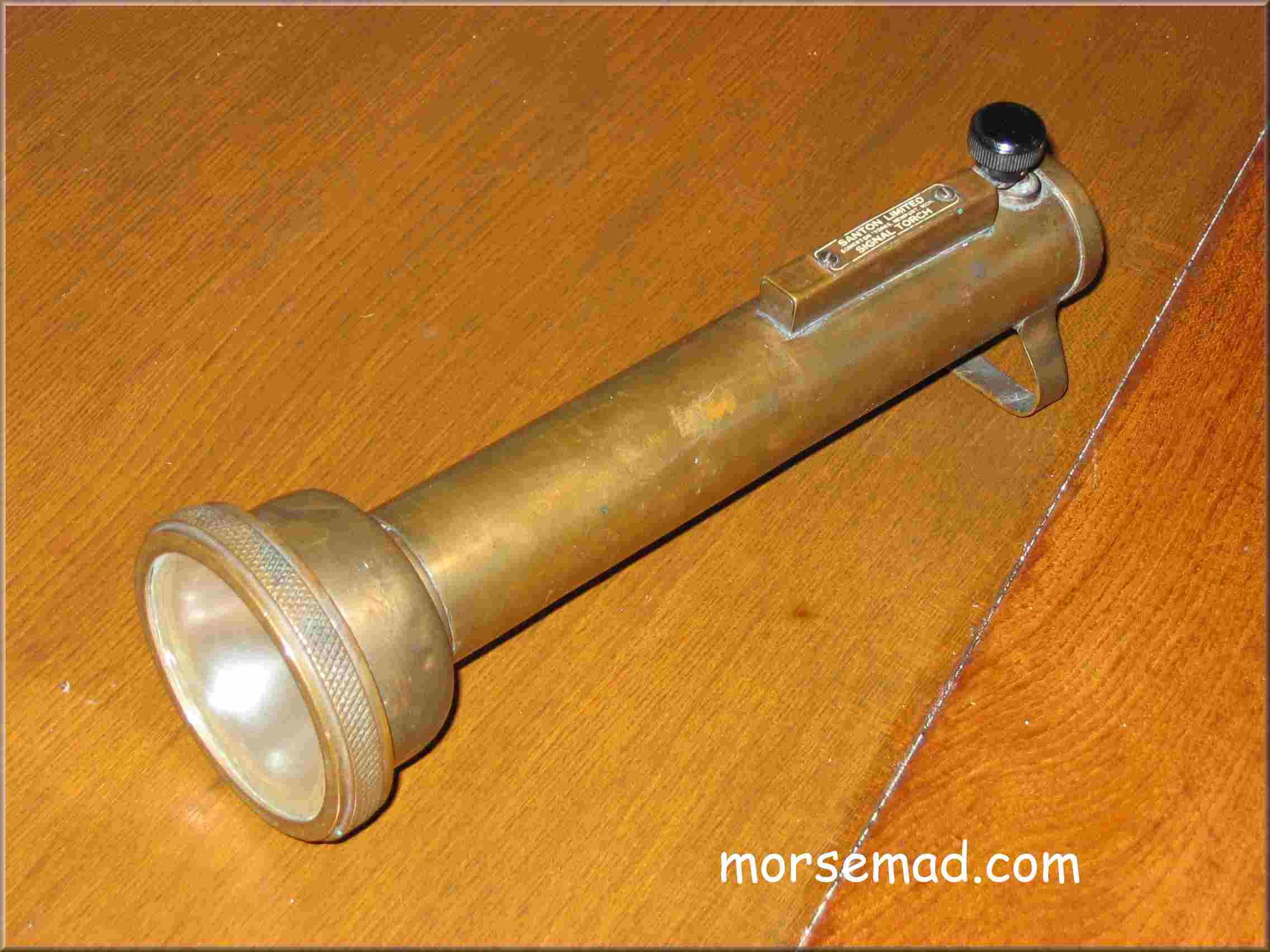
|  |
An Admiralty Night Signal Torch by SANTON LIMITED of Somerton 'Yorks & Newport. Mon.. Made of brass with quite a wide lens of 3" Dia (77mm) and a length of 10" (255mm). On the rear is stamped the Navy stores number "AP16001".

AN INTERESTING BULB HOLDER.
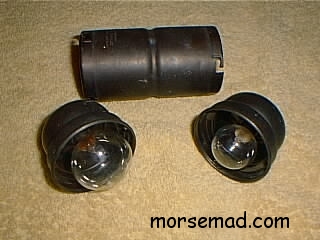
| 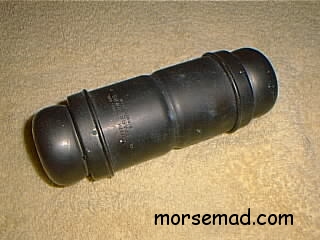 |
The cleverly designed tube above looks like it holds a couple of hand grenades, but actually is a container for two spare bulbs. I thought they were for the Aldis lamp, but on closer examination I see they are of a different design and 12Volt - 60 Watts. On the container is stamped "Joseph Lucas Ltd. Spare Bulbs. Birmingham". Plus on each end is stamped " No17C".

 |
Above: Spotted in a local Pub/Restaurant in Torquay. A magnificent 10" Signalling Projector by Francis Searchlights of Bolton, Lancs., England c1988.